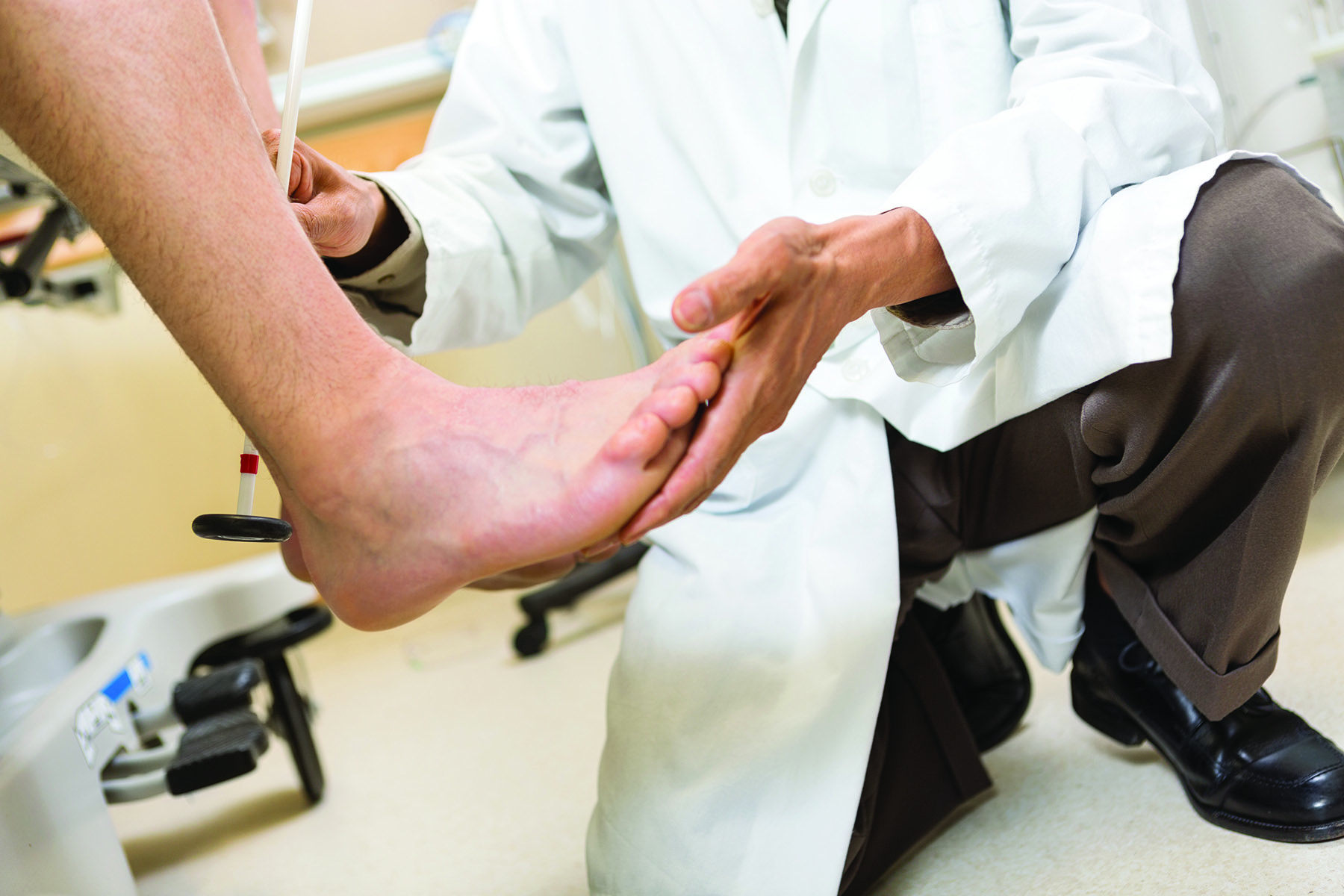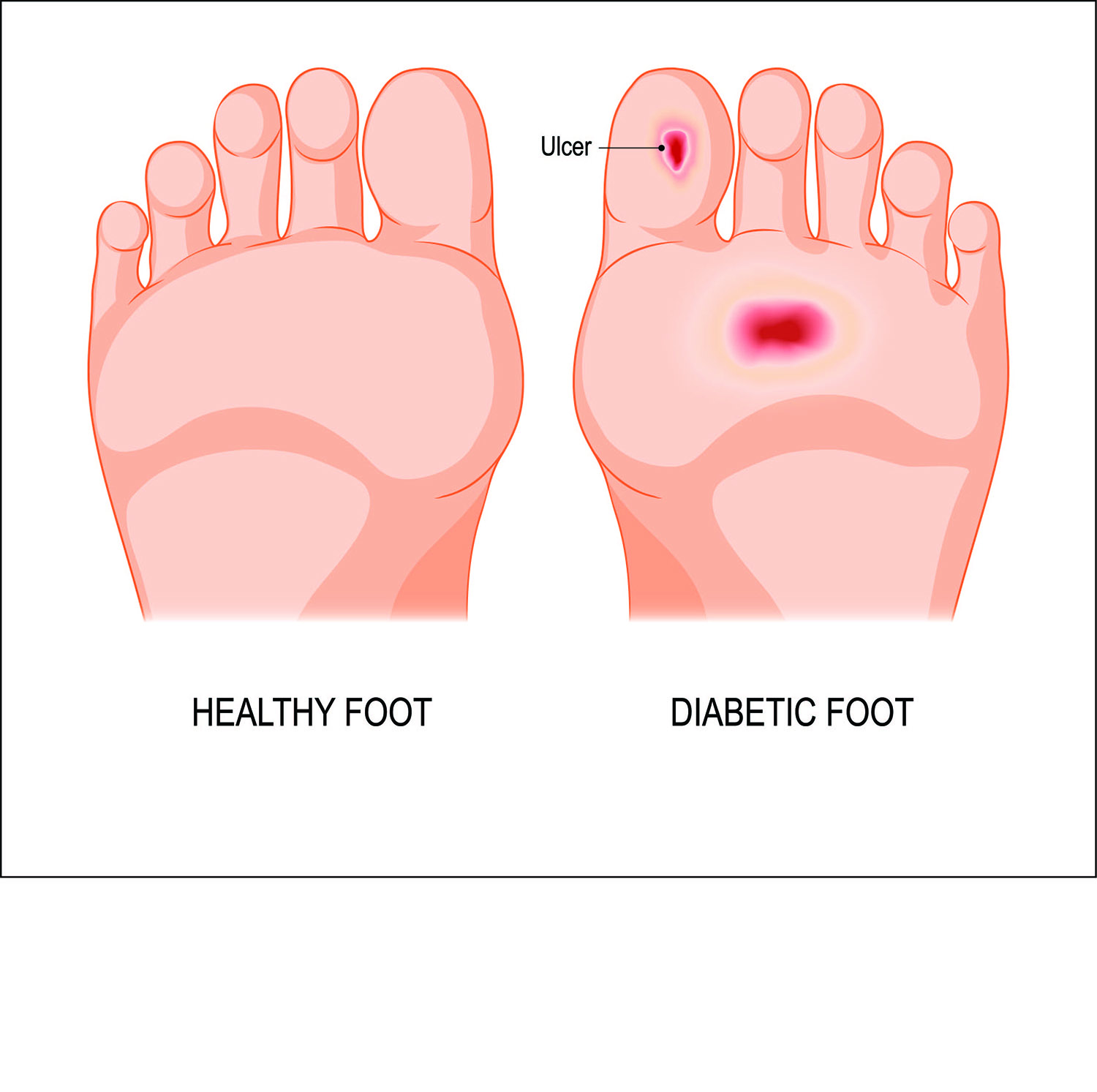"Diabetic foot ulcers are a critical event in a diabetic patient's life since only 60 percent of these patients will survive 5 years. The 5-year survival rate of a diabetic foot ulcer is worse than breast or prostate cancer – but this can be improved with appropriate medical care," says Dr. Charles Joels, vascular surgeon with University Surgical Associates (USA).
Why Are Foot Ulcers So Dangerous?
Diabetic ulcers are open sores on the foot – usually circular in nature – and occur commonly on the toes or heels although they can be present anywhere on the foot. They can develop because of cuts, blisters and sometimes callus formations that turn into ulcers. According to USA vascular surgeon Dr. Michael Greer, many people don't realize how serious even a small injury to the foot can be for a person with diabetes. A tiny scratch can develop into a major ulcer and spreading infection that can ultimately require amputation if not caught early enough.
"Any injury to the foot, no matter how small, should be evaluated by your physician, because small problems are much easier to treat than major infections," says Dr. Greer. "Because people with diabetes have less sensation in their feet due to neuropathy, it's important to look closely for these injuries every day. If you can't see well, then have a family member look for you. By acting quickly and talking with your doctor, you could do more than quickly heal a sore – you could save a limb!"
Check Your Feet Every Single Day
"I've had patients who have walked around with a nail in their shoe, resulting in a terrible injury to their foot – and they didn't know it had happened," says USA vascular surgeon Dr. Dan Fisher. "Others see a tiny black spot, and because they can't feel it, don't think it's serious enough to seek care. The opposite is true. Any skin breakdown should be examined by a primary care physician or podiatrist immediately."
Losing sensation and feeling in the feet and legs makes it very easy for a sore or scrape on the foot to go unnoticed until it's a major problem. That's why if you have diabetes you should check your feet daily to watch out for any changes. This includes the top and bottom of the feet and in between toes. If you see changes, make an appointment with your doctor.
Vascular Surgeons Provide Care for Diabetics
Vascular surgeons are expert doctors in the circulatory system, which is why they're considered best suited to treat the complicated vascular problems associated with diabetes. Without proper circulation, diabetic ulcers will not heal and patients risk having an amputation. But with early intervention, amputation can be preventable.
Early Intervention is Critical
The majority of amputations are preventable with appropriate care, and that begins with patient education about the importance of controlling blood sugar, eating an appropriate diet, smoking and alcohol cessation, and seeing a physician regularly. Dr. Greer recommends that people with diabetes see their family physician or podiatrist three to four times a year. Many need corrective footwear or inserts to keep from rubbing a blister that can lead to more serious problems.
"Over the years I've seen many diabetic foot problems, and too many patients have needless amputations. With proper intervention, we can effectively treat these conditions and help people live longer and with a better quality of life."
Noteworthy:
"Diabetic foot ulcers are a critical event in a diabetic patient's life since only 60 percent of these patients will survive 5 years. The 5-year survival rate of a diabetic foot ulcer is worse than breast or prostate cancer – but this can be improved with appropriate medical care." - Dr. Charles Joels, vascular surgeon with University Surgical Associates (USA).
For more information:
To learn more, visit universitysurgical.com or call 423-267-0466 to schedule a consultation.

